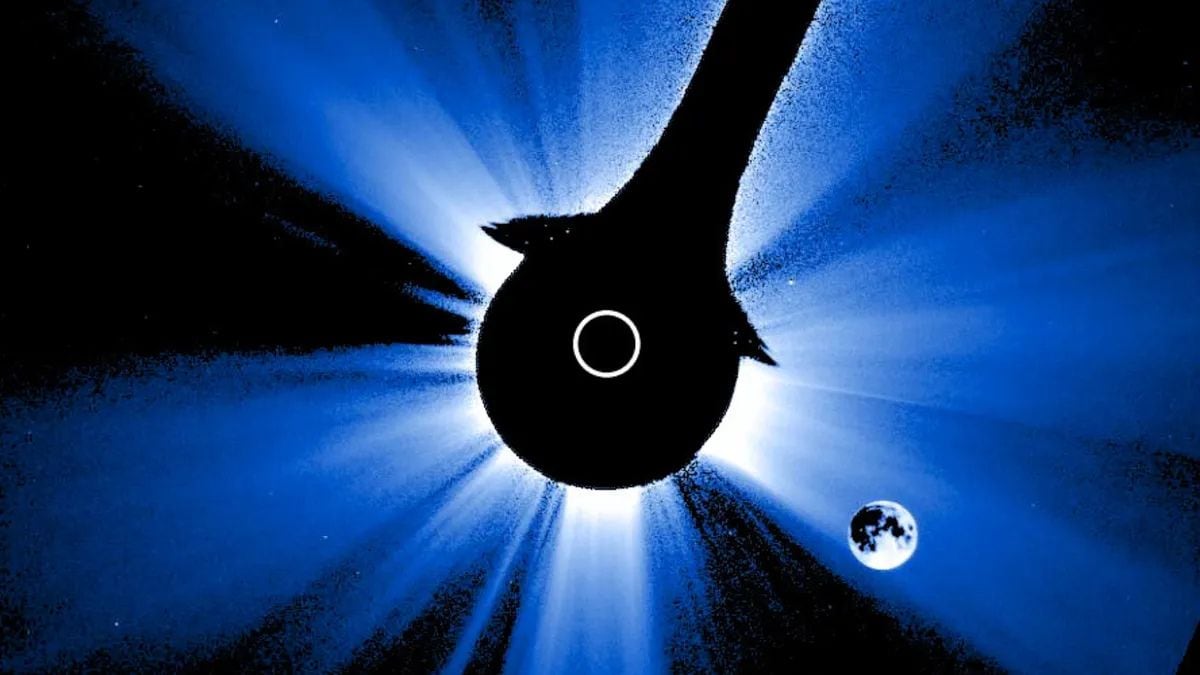The GOES-19 weather system's coronagraph CCOR-1 satellite recorded an unusual phenomenon on September 21, 2025. The Moon suddenly threw itself in front of the Sun in its orbit, and its relative course over the solar disk was oddly distorted. Contrary to typically straight line-shaped lineages, which must be seen in such captures, such curved lines baffled the scientists; however, it turns out, the cause is not the lunar delinquency, but the influence on the satellite.
How GOES-19 Caught a Natural Eclipse
According to NOAA, GOES-19 is equipped with an instrument called CCOR-1, which is normally fitted with the occulting disk that would normally block sunlight to enable it to observe the faint corona of the sun. However, this time the Moon itself came into play, creating an effect of a natural eclipse within the scope of vision of the instrument. Usually, the silhouette of the Moon moves in a straight line in the picture, but this time, it seemed to be in a zig-zag fashion. The root cause: GOES-19 had planned a yaw-flip attitude change around Sept. 22, which would presumably result in the satellite changing its orientation to the extent that it would cause a bend in the apparent path in processed imagery.
How is it significant
This is a major breakthrough in the observation of the sun. Although coronagraphs such as the SOHO, which are in the L1 Lagrange point, are not able to observe such eclipses because of the relative positions of the Moon to them, GOES-19 can do so owing to the proximity of its orbit. Such a rare natural eclipse is an opportunity to test and improve the imaging and processing systems of the coronagraph that will improve future solar observations and our knowledge of the behaviour of the Sun.

Comments
Post a Comment